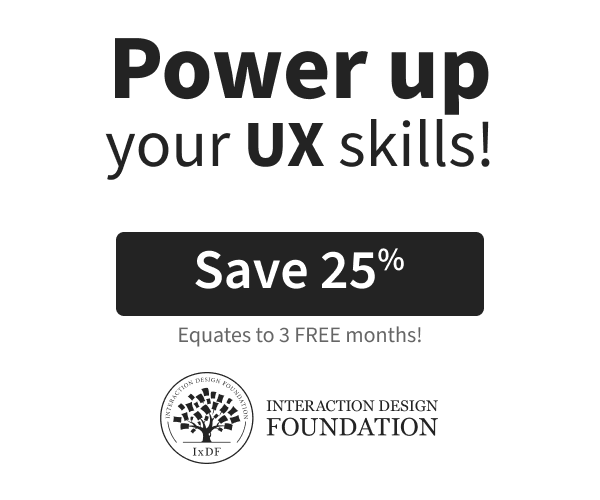

Aaron Gustafson inspires us to build a web for all people. He encourages us to keep an open mind about perspectives that are different than our own. He motivates us to keep focused on context when it comes to the users we’re designing for. He also challenges us to plant seeds of growth in others by making ourselves available and open to new opportunities.
Aaron Gustafson is passionate about web standards and accessibility as would be expected from a former manager of the Web Standards Project. In his two decades working on the Web, he’s worked with companies such as Happy Cog, Major League Baseball, McAfee and The New York Times. He joined Microsoft as a web standards advocate to work closely with their browser team. He loves sharing his knowledge through writing. His three-part series on progressive enhancement for A List Apart is a perennial favorite and his seminal book on the subject, Adaptive Web Design, has earned him numerous accolades and honors. When he’s not writing, he’s probably on the road presenting at conferences and running workshops across the globe. He is a longtime member of Rosenfeld Media’s “experts” group and former technical editor for A List Apart. He and his wife also brokered and produced the DVD release of Drawing Flies which was also produced by Kevin Smith (of Clerks fame who also happens to be a fellow comic book nerd).
- Secret Identity/Origin Story (3:43)
- Biggest Superhero (10:11)
- Second Career Choice (15:17)
- Biggest Failure (20:48)
- Awkward Testing Story (30:50)
- Design Superpower (49:37)
- Design Kryptonite (51:03)
- Design Superhero Name (51:41)
- Fight For Users (53:23)
- Future Of UX Design (55:18)
- Habit Of Success (60:20)
- Invincible Resource (63:30)
- Book Recommendation (66:45)
- Best Advice (69:31)
- Most Excited About (74:16)
- Contact Info (79:55)
LINKS
Aaron Gustafson’s Twitter
Aaron Gustafson’s Website
[RESOURCE] Your brain.
[BOOK] Nicely Said
SUBSCRIBE TO AUTOMATICALLY RECEIVE NEW EPISODES
Apple Podcasts | Spotify | Pandora | Amazon Music | RSS Feed
USE YOUR SUPERPOWER OF SUPPORT
Here’s your chance to use your superpower of support. Don’t rely on telepathy alone! If you’re enjoying the show, would you take two minutes and leave a rating and review on Apple Podcasts? I’d also be willing to remove my cloak of invisibility from your inbox if you’d subscribe to the newsletter for superguest announcements and more, occasionally.
SUPER-CRED
Artwork by Eli Jorgensen | Editing by Chris Combs | Show Notes by Darryn Goldsmith
AWKWARD TESTING STORY
Not that I can think of in user testing. We did have a project that kind of threw us for a loop that I talk about in the book. We were building a project for a specific set of browsers within the context of apps. For the initial project they had us build this whole login flow using Webtech. It solved some of their problems getting new security measures rolled out. About six months after we launched they came back to us and said it was really helpful and they’d really like to roll this out to their end dot site. We said okay and they asked if they could send us a spreadsheet to give us a sense of the devices we’re dealing with. Sure! Go ahead! So the spreadsheet had 1,400 different user agent strings that logged in the last two days. It was just mind blowing. The variability from iPhones to Window phones to Openwave to Opera Mini and all of this insanity. Our heads were spinning! Where do we begin?
The only way I could wrap my head around this challenge was to actually write a script that pulled back all this data about each of these devices and started to do aggregation based on device size, RAM, operating system and browser which brought it down to a much more manageable set of 23 devices that covered about 97% of the spectrum. Which is still a lot of devices to test. But it wasn’t 1,400! So that was a little bit better. That’s probably the most bizarre experience I’ve had over 20 years.
DESIGN SUPERPOWER
I think some people would probably say I’m really good at breaking things. Back when I was in agency land I had a friend that was a Flash developer and I was the web guy and we used to go back and forth creating things and handing it over to the other person to look at and in most cases it was hand it over to the other person to break. I seemed to have this unique knack to break his various Flash things. I don’t know how exactly I have that knack but that’s probably my superpower is finding a way to break something.
DESIGN KRYPTONITE
I think closed minds. People who aren’t willing to have a frank discussion about things and entertain perspectives that are different than their own or aren’t willing to learn something new. I think people who are too set in their ways. I have a really hard time functioning in that space. Closed minds would definitely be my kryptonite.
SUPERHERO NAME
The Enhancer
HOW DO YOU FIGHT FOR YOUR USERS?
I think a lot of it’s about seeing or recognizing our sameness and really empathizing with the situations that people find themselves in. I feel like personas in a lot of cases, which we use in the UX world quite often to remind us of the sorts of people that we’re building things from, can be good but sometimes can be a little two-dimensional. So I’m a big fan of certain situational things. For example, if you’re building an application for searching for auto parts that gets used by mechanics and you’re given Bob as a persona, you don’t need to know that Bob drinks two lattes a day. You need to know that he spends time underneath a car and often has one hand on that car and one hand on his smart phone or tablet while he’s looking up information for a part that he needs.
Being able to quickly put yourself in your end customers’ position and see things from their perspective gives you new insight into how you should be building things and the things you need to take into consideration. Pushing for that and getting people to break out of their bubble or, in some cases, bursting their bubble, that’s how I fight for users.
FUTURE OF UX
I think we’re going to start to see a lot more user experience focused on the conversations we’re having with our users. So getting back to that core functionality and core messaging. Because that’s how your brand is conveyed to people. That’s how people walk away being happy with their interactions with you (or unhappy with those interactions). Everything is cyclical.
In the early days of the Web we were text only and then visual design began to flourish. That’s been phenomenal, however, I think we’re seeing a contraction again where if you look at the responsive design stuff (and mobile first) you see there is a push for us to focus on the signal versus the noise on a page and really focus on the core tasks. I think that’s going to become even more important as we move into the world of headless UIs with no visual indication whatsoever. We need to be thinking of what the cognitive overhead of our interface is and how many fields are we making someone fill out in a contact form. Are they all necessary? Can we streamline these things more? Are there affordances we can put in place to help expedite accomplishing XYZ. I think it will require coming back and focusing on our markup a lot. What can we do natively in HTML because CSS may not play into it?
Nobody has been implementing where we have control over voice and pace or how things are spoken or spelled out. We need to think of what happens when Siri or other knowledge navigators become fully connected to the browser and they don’t just present you with search results but instead actually read you content from the most likely answer to your question. Semantics will play a big part of that and making sure we’re marking up our content with thoughtfulness will pay huge dividends.
HABIT OF SUCCESS
That’s a tough one. Always questioning the decisions we make and second-guessing ourselves because the more that we do that the more we learn and challenge ourselves to make the best possible decisions given the information that we have. It all comes back to iteration. Iterative thinking. Iterative design. Iterative programming. Constantly questioning the decisions you’ve made is good.
INVINCIBLE RESOURCE
Your brain. Because that’s the one that’s going to stick with you. When I look back to the not-so-long history of the Web I think back to people who only learned how to do web design in Dreamweaver. While that was a really approachable tool that enabled a lot of people to come online and I definitely value Dreamweaver’s contribution to the Web and all the wonderful content we have on it, but by the same token, in school if you were taking a web design class and you were only being taught to use Dreamweaver, then that was not a good education.
We need to know what our tools are doing for us in order for us to understand the medium we’re working in. That’s why our brain is the most important thing. If your experience of JavaScript is jQuery then figuring out what jQuery is doing under the hood will help you to better understand how JavaScript works and may eventually allow you to just write your own JavaScript as opposed to needing to load jQuery in as well. Your brain is the best tool you have for working on the Web.
BOOK RECOMMENDATION
Nicely Said by Kate Kiefer Lee and Nicole Fenton. It’s all about writing for the Web. I feel like it’s a really approachable book and has a lot of super-useful and actionable bits of information that you can put in your work right away. As designers there is a need for us to guide the way that copy should be created because it’s also part of the brand and experience. It’s another tool in our belt to create great experiences on the Web. It will help you to fill in the blanks.
BEST ADVICE
Look for opportunities but don’t be overly aggressive. Make yourself available and open to opportunities. Offering to help people succeed in what they do will pay huge dividends. Also, be humble. It’s important to know that you don’t know everything.
MOST EXCITED ABOUT
We’ve got the 10k Apart competition. The entries just closed and by the time this airs the competition will be done, but that’s a really exciting thing. It brings us back to the roots of web design by trying to build an experience in ten kilobytes or less. The gallery is full of amazing ideas and was really fun.

